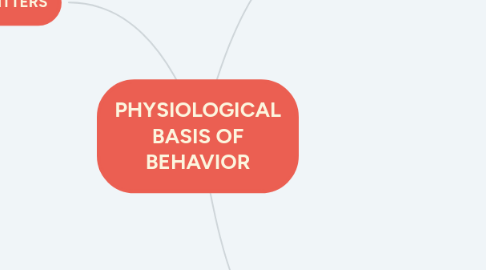
1. NEUROTRANSMITTERS
1.1. Acetylcholine
1.1.1. memory and attention
1.2. Norepinephrine
1.2.1. increase or decrease in brain correlates with mood level
1.3. Dopamine
1.3.1. mediates effects of natural rewards, voluntary movement, learning and memory
1.4. Serotonin
1.4.1. mood regulation
1.5. Glutamate
1.5.1. excitatory in nature, linked in learning and memory
1.6. GABA
1.6.1. – inhibitory in nature, help control muscle movement
2. PHYSIOLOGICAL BASIS OF BEHAVIOR
2.1. Nervous System
2.1.1. Central Nervous System
2.1.1.1. Brain
2.1.1.1.1. controls our thoughts, memory and speech, movement of the arms and legs, and the function of many organs within our body
2.1.1.2. Spinal chord
2.1.1.2.1. the pathway for messages sent by the brain to the body and from the body to the brain
2.1.2. Peripheral Nervous System
2.1.2.1. Autonomic System
2.1.2.1.1. regulates certain body processes, such as blood pressure and the rate of breathing. This system works automatically
2.1.2.2. Somatic
2.1.2.2.1. voluntary control of the body movements via the use of skeletal muscles
3. BASIC UNIT OF THE NERVOUS SYSTEM
3.1. Neuron
3.1.1. SENSORY NEURONS
3.1.1.1. Transmit impulses from receptors to CNS
3.1.2. MOTOR NEURONS
3.1.2.1. Carry outgoing signals from CNS to muscles and glands
3.1.3. INTER-NEURONS
3.1.3.1. Connect sensory and motor neurons
3.2. Action Potentials
3.2.1. Each action potential is the result of movement electrically charged particles in and out of neuron
3.3. Synaptic Transmission and Neural Coding
3.3.1. “all-or-none law”
3.3.2. “Lock-and-key action”
